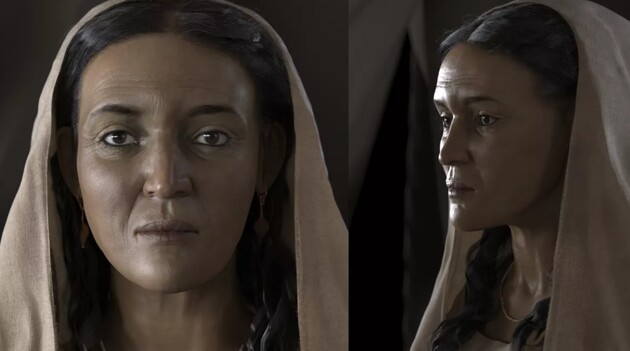She lived on the territory of modern Saudi Arabia 2000 years ago.

Scientists from Saudi Arabia presented a reconstruction of the face of a woman who was a representative of the Nabatean people. Her remains, along with those of 80 other people, were buried in a 2,000-year-old tomb located in Hegra, a UNESCO World Heritage Site, Live Science reported.
The skeleton of a woman was found in 2015, and she was named Hinata, based on the inscription about the deceased, which was painted on the tomb. Further analysis of the skeleton showed that the woman lived to be 40-50 years old, her height was 1.6 meters, and her burial indicated her average social status.
Also read: Archaeologists found burial mounds of an ancient civilization in Mexico
In order to reconstruct the face, scientists combined their knowledge in the field of forensics and paleopathology (the study of diseases in ancient people). They also used computed tomography and a 3D printer to create a silicone image. As a result, they created the figure of a woman with dark skin and black hair, partially covered with a scarf.
The Nabateans lived along the Incense Trade Route that connected Southern Arabia with the Mediterranean Sea. At the same time, not much is known about them.
“The Nabateans are a kind of mystery: we know a lot, but at the same time very little, because they did not leave any literary texts or records. Excavating this tomb was a great opportunity to learn more about their ideas about the afterlife,” said archaeologist Laila Neme.
Due to the lack of written or genetic records, researchers allowed themselves some freedom in recreating Hinata's image. They used archaeological data to better understand how women of that civilization might have dressed. But pieces of fabric found in the tomb served as a source of inspiration for her clothes.
Related video
Previously scientists managed to recreate the image of a woman who lived 31 thousand years ago in the territory of modern Europe. Initially, researchers identified the remains of a woman as male, but during a new study, scientists discovered a mistake.




